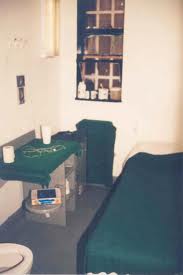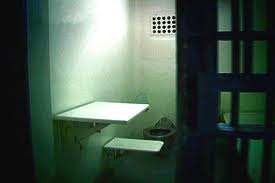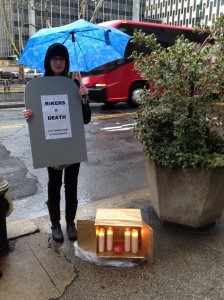by Victoria Law. Excerpted from Solitary Watch.
 Imagine row after row of cell doors that rarely open and row after row of people trapped behind those doors, in small cells, day after day. Imagine having to hold most of your conversations by shouting through your cell door at voices whose faces you cannot see; imagine trying to sleep as a cacophony of other voices continue shouting around you.
Imagine row after row of cell doors that rarely open and row after row of people trapped behind those doors, in small cells, day after day. Imagine having to hold most of your conversations by shouting through your cell door at voices whose faces you cannot see; imagine trying to sleep as a cacophony of other voices continue shouting around you.
This is the reality inside Southport Correctional Facility, New York’s first supermax prison. Located four hours west of New York City near the Pennsylvania border, Southport holds roughly 350 people in Special Housing Units (SHUs), or specially-designed solitary confinement units, on any given day. These 350 people spend at least 23 hours each day alone in their cells with little to no human interaction or programming to engage their minds.
On Wednesday, the Correctional Association of New York, the state’s oldest prison monitoring organization, released a report entitled Solitary at Southport. Drawing on the organization’s 2015 inspection of the prison, one-on-one interviews with nearly every person held in the SHU, follow-up investigations, and responses from over 190 written surveys and correspondence, Solitary at Southport reveals a prison that “embodies some of the very worst aspects of incarceration in New York.”
Read the full article at Solitary Watch.
 The head of the troubled New York City jail system said Thursday it’s critical to send mentally ill inmates to treatment programs instead of a lockup.
The head of the troubled New York City jail system said Thursday it’s critical to send mentally ill inmates to treatment programs instead of a lockup.

 The Correction Officers’ Benevolent Association (COBA) pressed particularly hard for the increase in punitive bed space, attributing a spike in attacks on COs to the backlog of prisoners waiting to serve time in “the Bing,” as solitary confinement on Rikers is called. At a November 2011 City Council meeting, Schriro was grilled by City Council member Elizabeth Crowley about the problem. Schriro re
The Correction Officers’ Benevolent Association (COBA) pressed particularly hard for the increase in punitive bed space, attributing a spike in attacks on COs to the backlog of prisoners waiting to serve time in “the Bing,” as solitary confinement on Rikers is called. At a November 2011 City Council meeting, Schriro was grilled by City Council member Elizabeth Crowley about the problem. Schriro re
Follow the #HALTsolitary Campaign